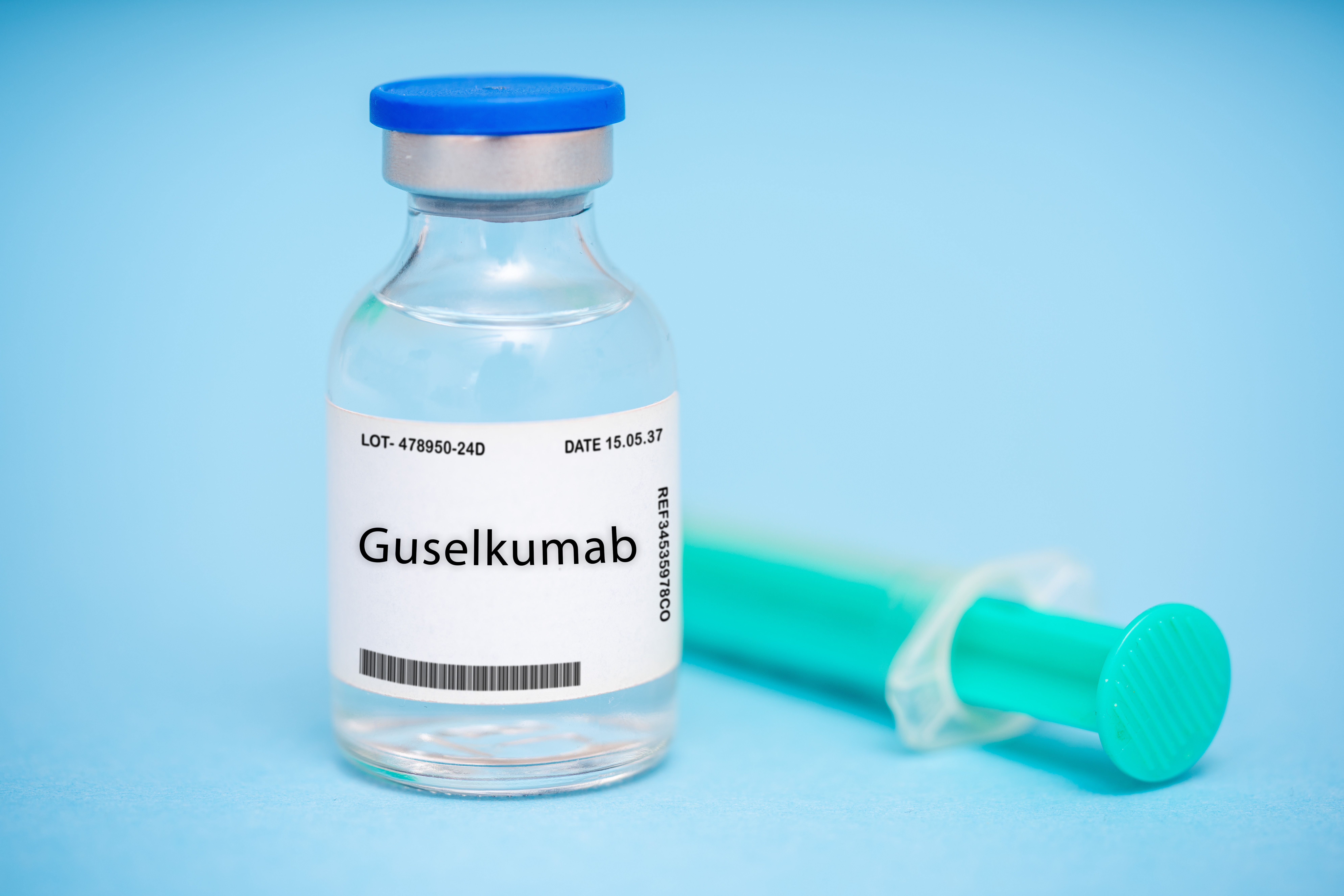- Center on Health Equity & Access
- Clinical
- Health Care Cost
- Health Care Delivery
- Insurance
- Policy
- Technology
- Value-Based Care
Extended Guselkumab Dosing Every 16 Weeks Proven Effective for Psoriasis Maintenance
This new study confirms the noninferiority of extended dosing intervals for psoriasis control in super responders.
Guselkumab administered every 16 weeks can maintain disease control in patients with psoriasis who achieve early and complete skin clearance, offering a potential strategy for treatment de-escalation, according to a new study.1

The GUIDE trial is an ongoing phase 3b, randomized, double-blinded trial conducted across 80 centers in Germany and France, and is published in JAMA Dermatology.
“The GUIDE trial, to our knowledge, is the first randomized clinical trial providing evidence that guselkumab-treated patients with early and complete skin clearance can maintain control of psoriasis with an extended dosing interval,” wrote the researchers of the study.
Guselkumab (Tremfya; Johnson & Johnson) is an interleukin (IL)-23 inhibitor, and a prescription medicine used to treat adults with moderate to severe plaque psoriasis who may benefit from taking injections, systemic therapy, or phototherapy.1,2 It is also used to treat adult patients with psoriatic arthritis.
In this study, the researchers’ primary objective was to demonstrate noninferiority of guselkumab every 16 weeks vs every 8 weeks among super responders for maintaining disease control, defined as Psoriasis Area Severity Index (PASI) lower than 3 at week 68.1
In weeks 0 to 28, patients received guselkumab 100 mg at weeks 0, 4, 12, and 20. Those who achieved PASI 0 at weeks 20 and 28 were termed super responders. From weeks 28 to 68, super responders were randomized to guselkumab 100 mg every 8 weeks or every 16 weeks, while non–super responders continued on open-label guselkumab every 8 weeks.
A total of 822 patients received guselkumab, in which 297 (36.15%) were super responders. The primary end point was met (P = .001), with 91.0% (137/149; 90% CI, 87.3%-95.3%) of super responders on every-16-weeks dosing and 92.6% (137/148; 90% CI, 88.0%-95.8%) on every-8-weeks dosing having a PASI lower than 3 at week 68.
Additionally, biomarker substudies assessed immunologic effects in skin and blood, finding clinical effects corresponded with decreases in skin CD-8–positive tissue-resident memory T-cell counts and serum levels of IL-17A, IL-17F, IL-22, and β defensin-2.
The researchers acknowledged some limitations to the study. First, the study’s duration was 68 weeks, which the researchers noted might not be long enough to fully assess the long-term safety and efficacy of the extended dosing regimen. Second, because the study focused on super responders who were already experiencing a strong response to the treatment, the findings might not be applicable to patients with less favorable response or those who are new to guselkumab therapy. Third, the trial evaluated only guselkumab and did not compare it with other therapies or dosing regimens, which limited the researchers’ understanding on how it compares with other treatments in terms of safety and efficacy.
Despite these limitations, the researchers believe the GUIDE trial provided evidence that guselkumab every 16 weeks can maintain disease control in patients with psoriasis who achieve early and complete skin clearance.
“The GUIDE clinical trial contributes critical prospective data to help address individual patient needs in everyday practice, and potentially improve long-term disease management and patient compliance with treatment,” wrote the researchers.
References
1. Eyerich K, Asadullah K, Pinter A, et al. Noninferiority of 16-week vs 8-week guselkumab dosing in super responders for maintaining control of psoriasis: The GUIDE randomized clinical trial. JAMA Dermatol. Published online July 31, 2024. doi:10.1001/jamadermatol.2024.2463
2. Tremfya (guselkumab). Prescribing information. Johnson & Johnson; 2023. Accessed August 6, 2024. https://www.tremfya.com/
Integrated Care for Chronic Conditions: A Randomized Care Management Trial
December 3rd 2025The authors sought to understand the differential impact of payer-led community-based care management approaches on stakeholder-oriented outcomes for publicly insured adults with multiple chronic conditions.
Read More
Managed Care Reflections: A Q&A With A. Mark Fendrick, MD, and Michael E. Chernew, PhD
December 2nd 2025To mark the 30th anniversary of The American Journal of Managed Care (AJMC), each issue in 2025 includes a special feature: reflections from a thought leader on what has changed—and what has not—over the past 3 decades and what’s next for managed care. The December issue features a conversation with AJMC Co–Editors in Chief A. Mark Fendrick, MD, director of the Center for Value-Based Insurance Design and a professor at the University of Michigan in Ann Arbor; and Michael E. Chernew, PhD, the Leonard D. Schaeffer Professor of Health Care Policy and the director of the Healthcare Markets and Regulation Lab at Harvard Medical School in Boston, Massachusetts.
Read More
